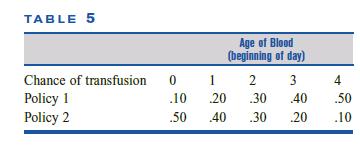17 Seas Beginning sells clothing by mail order. An important question is: When should the company strike
Question:
17 Seas Beginning sells clothing by mail order. An important question is: When should the company strike a customer from its mailing list? At present, the company does so if a customer fails to order from six consecutive catalogs. Management wants to know if striking a customer after failure to order from four consecutive catalogs will result in a higher profit per customer.
The following data are available: Six percent of all customers who receive a catalog for the first time place an order. If a customer placed an order from the last-received catalog, then there is a 20% chance he or she will order from the next catalog. If a customer last placed an order one catalog ago, there is a 16% chance he or she will order from the next catalog received. If a customer last placed an order two catalogs ago, there is a 12% chance he or she will place an order from the next catalog received. If a customer last placed an order three catalogs ago, there is an 8% chance he or she will place an order from the next catalog received.
If a customer last placed an order four catalogs ago, there is a 4% chance he or she will place an order from the next catalog received. If a customer last placed an order five catalogs ago, there is a 2% chance he or she will place an order from the next catalog received.
It costs $1 to send a catalog, and the average profit per order is $15. To maximize expected profit per customer, should Seas Beginning cancel customers after six nonorders or four nonorders?
Hint: Model each customer’s evolution as a Markov chain with possible states New, 0, 1, 2, 3, 4, 5, Canceled. A customer’s state represents the number of catalogs received since the customer last placed an order. “New” means the customer received a catalog for the first time. “Canceled”
means that the customer has failed to order from six consecutive catalogs. For example, suppose a customer placed the following sequence of orders (O) and nonorders (NO):
NO NO O NO NO O O NO NO O NO NO NO NO NO NO Canceled Here we are assuming a customer is stricken from the mailing list after six consecutive nonorders. For this sequence of orders and nonorders, the states are (ith listed

state occurs right before ith catalog is received)
New 1 2 0 1 2 0 0 1 2 0 1 2 3 4 5 Canceled You should be able to figure (for each cancellation policy)
the expected number of orders a customer will place before cancellation and the expected number of catalogs a customer will receive before cancellation. This will enable you to compute expected profit per customer
Step by Step Answer:

Operations Research Applications And Algorithms
ISBN: 9780534380588
4th Edition
Authors: Wayne L. Winston






